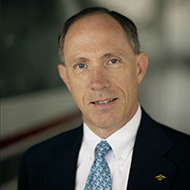AOPA Air Safety Foundation Executive Director Bruce Landsberg is a 5,000-hour-plus ATP.
Some pilots and pundits have expressed skepticism about technically advanced aircraft (TAA) and their inherent systems. The most common statement in the advanced avionics cockpit, according to airline and corporate pilots, is, "What is it doing now?" This refers to the avionics doing something that the crew didn't expect.
Chip Rosenthal, chief executive officer of Unicom Systems Development, notes, "I'm not schooled in the science of human factors, but I suspect surprise is not an element of a robust user interface."
Speaking of computer interfaces in general, Jeff Raskin, Apple Computer's former manager of advanced systems, was more direct. "The multiple stupidities of even the latest designs...show either an unjustifiable ignorance of or a near-criminal avoidance of what we do know [about existing engineering methods for designing human-computer interfaces]." (See " The Glass Specialist," page 99.)
In designing aircraft and avionics, key interface considerations are simplicity and consistency. The pilot's primary job is to know where the aircraft is in four-dimensional space and where it needs to go next. Beyond that, we're getting into niceties. Change in flight is constant and inevitable, so inputs must be made quickly and the system must be fault tolerant. The multifunction display and moving map are huge improvements to situational awareness, and we can't say enough good things about them. They provide the electronic "map in the head" that all instructors attempt to build into their students.
But it often takes too many button pushes and knob twists to get the hardware to display the promised high level of situational awareness in the time that the single pilot has available. Technology emerges as a double-edged sword, increasing pilot and aircraft capabilities but frequently at the price of increased workload and education.
Some designers do not yet fully understand their customers or the environment in which they operate. That is not unique to aircraft, of course, and can be seen daily in our technophile or technophobe society — new home-entertainment systems, wireless networks, computer software, personal digital assistants, automotive sound systems — the list is endless.
The difference with complex avionics and aircraft design is that the penalty for slow learning, improper operation, or misunderstanding the equipment can be fatal. From an accident-investigation perspective, the probable cause likely will be that "the pilot failed to follow the instrument approach procedure" or "the pilot became disoriented for unknown reasons." Tying the cause of an accident back to a complex user interface requires analysis that is probably beyond the current state of the art in accident reconstruction.
To be fair, marketers, engineers, and customers themselves are constantly balancing pricing, competitive features, and the technology as it evolves to make the right decision. This is not easy to do or we wouldn't have so many examples of technology that could be improved. The nature of invention is to build products that invariably are improved. It's much easier to criticize than to create.
More features are not better; better functionality is better. (A limited AOPA Air Safety Foundation study supports this view; because of the small sample size, we continue to gather data. Preliminary findings show that pilots, as a group, preferred simple design and fewer choices to highly capable, complex machines.) It takes a very good understanding of the single-pilot environment and a clear sense of direction to achieve this.
In the airline and corporate pilot environment where pilots are paid to think about their jobs constantly and must undergo extensive training on a regular basis, equipment design and training tasks are easier. The target population is more homogeneous and its motivation is clear. In light general aviation, the motives and the pilot population are completely different even though the penalties for failure are just as severe.
The occasional, or renter, pilot will have a steeper learning curve to enjoy many of the promised advantages of the current TAA, especially if he or she flies several aircraft with different navigation systems. In the future, that barrier may go away as aircraft systems and avionics get smarter. At this writing, more systems commonality is gradually coming, which eases the learning process, but there is still a ways to go.
To achieve the goal of significantly safer flight for many more people, the interfaces and the skills required must become less demanding. Training and maintaining proficiency must take less time and be simpler. Extensive training to make up for complex design puts a tremendous burden on users. It's impossible to consistently replicate excellence in that wonderfully variable and unpredictable device — the human pilot. Far better results are achieved by designing the product so well that most pilots can consistently perform well.
Some might call it the "dumbing down" of aviation, but the major advances in airline and GA safety have historically come from technology. For the airlines and corporate flight departments, jet engines, ground proximity warning devices, traffic collision avoidance systems, and advanced simulation for training have had a huge impact on safety. In GA, the advent of nosewheel aircraft sharply reduced landing accidents. We predict that terrain, weather, and traffic avoidance now coming into the new TAA will help — and all of those require little or no manipulation on the part of the pilot to provide lifesaving functionality. They also require pilots to recognize the equipment-pilot-aircraft limitations and not put themselves in a high-risk situation based on the idea that the technology changes the fundamentals of aviation safety.
We are now on the cusp of a new era that includes better training simulation, new engines, and some of the high-end technologies that the jet world has enjoyed for decades. There will be growing pains, however, as manufacturers and customers come to understand each other. The TAA and glass cockpits are a bold step in this direction. Evolution will precede revolution, but the long-term result will be a much safer and an ever more useful light-aircraft transport system than we have today.



